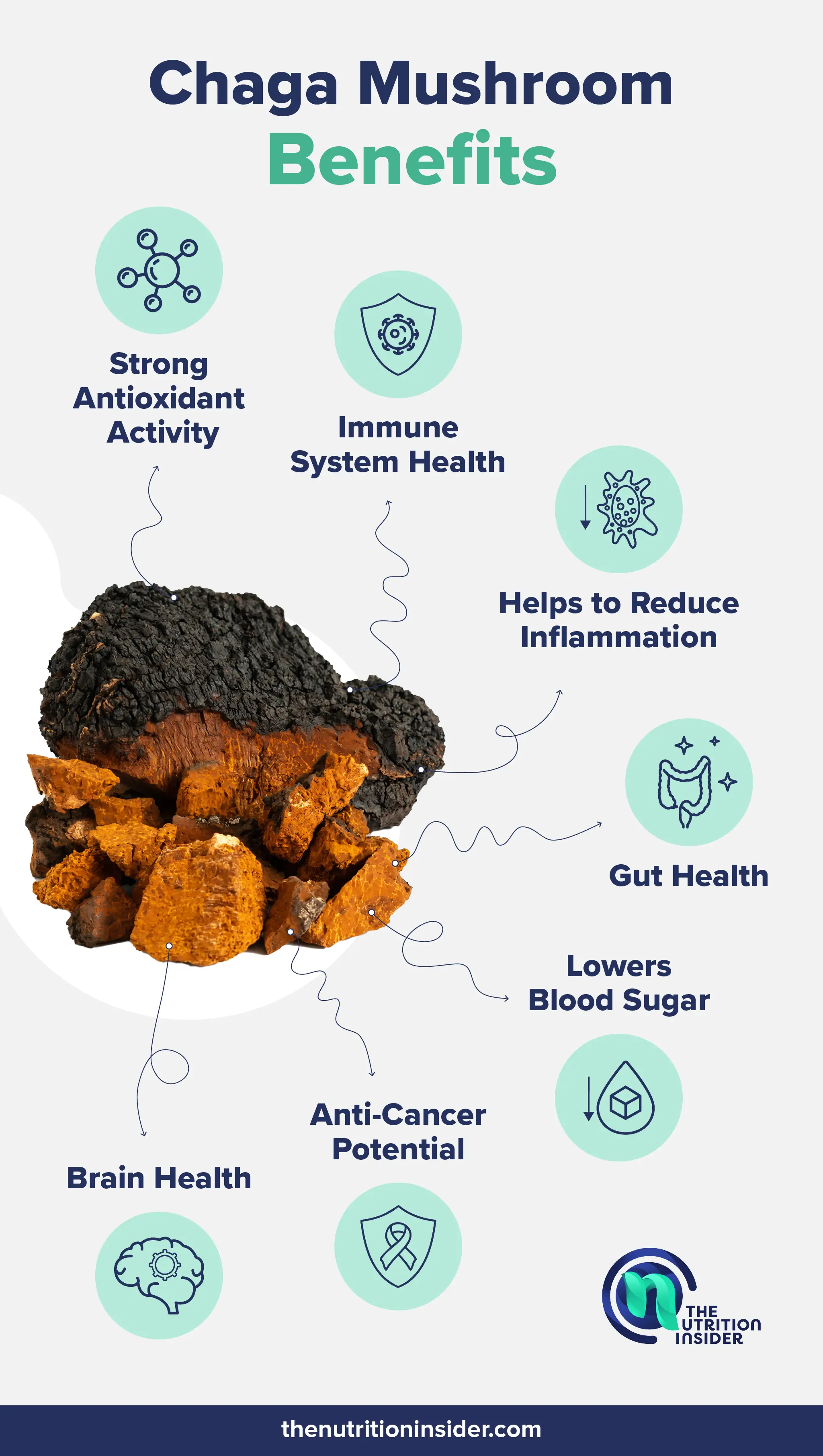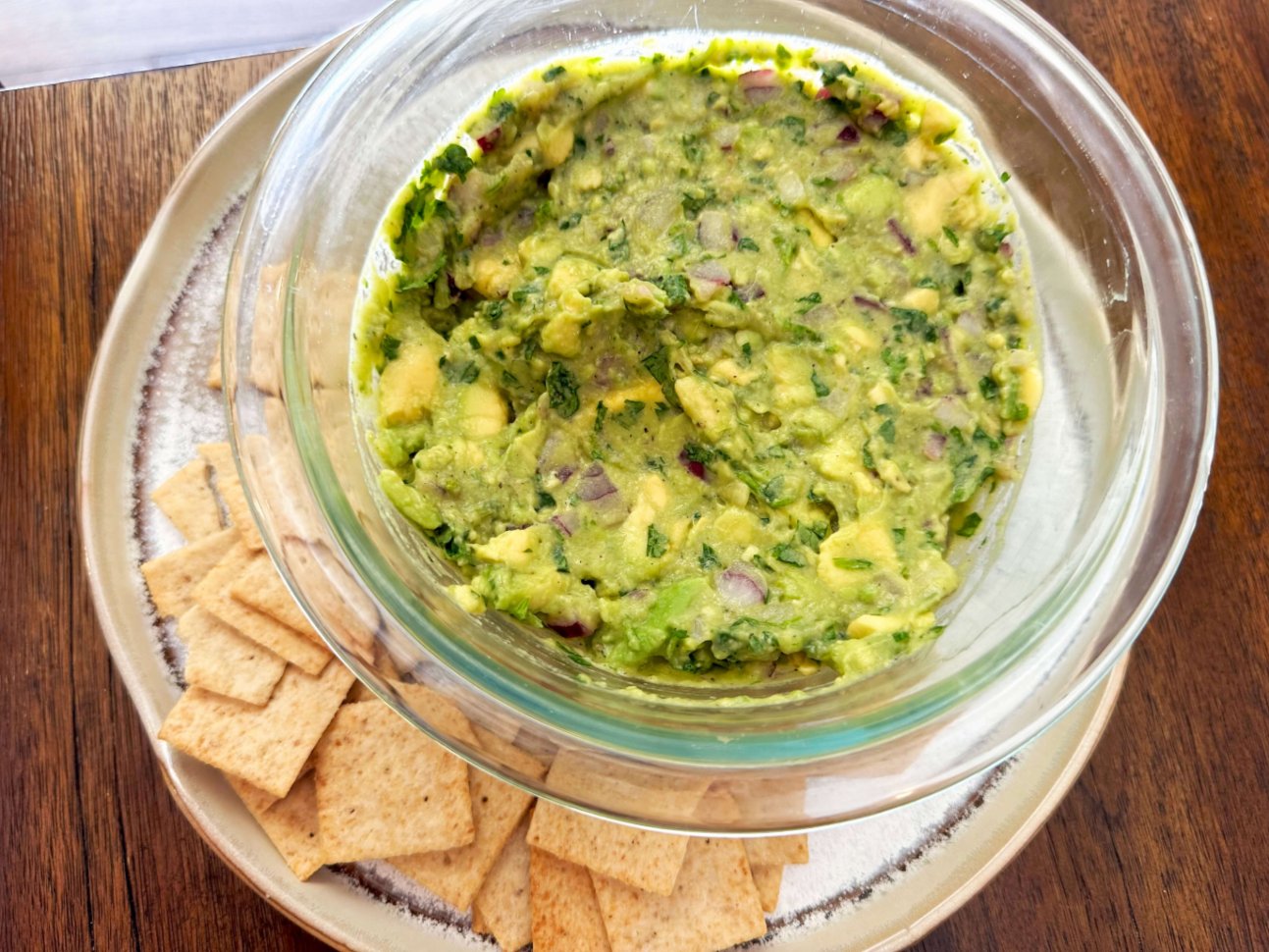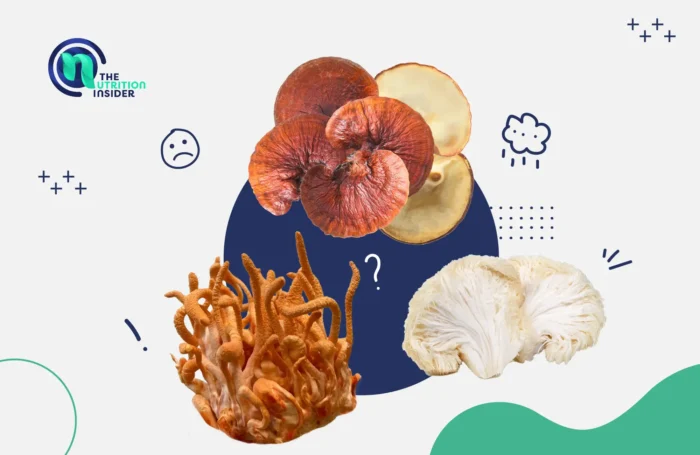This post contains links through which we may earn a small commission should you make a purchase from a brand. This in no way affects our ability to objectively critique the products and brands we review.
Top 7 Chaga Mushroom Benefits
Evidence Based Research To fulfill our commitment to bringing our audience accurate and insightful content, our expert writers and medical reviewers rely on carefully curated research.
Read Our Editorial Policy
With its use dating back to the 16th century in Russia, many refer to chaga as the “King of Mushrooms”—and for good reason, as chaga has plenty of evidence-based health benefits to back up this nickname.
But what exactly is chaga mushroom, and why is it so good for us? Let’s dive into the research behind chaga’s health benefits, including how it supports our brain, immune system, gut, and more.
What Is Chaga?
Chaga (Inonotus obliquus) is a functional mushroom with black-brown coloring that has been growing in several Northern Hemisphere countries for millions of years.
You can most often find chaga growing on the sides of birch trees in cold climates, including Canada, Russia, Siberia, Scandinavia, and some of the United States’ northernmost regions.
While many other functional mushrooms have beauty in addition to their benefits (cc: turkey tail), chaga is not one of them, with its burnt charcoal appearance.
But that certainly doesn’t mean it’s not nutritious. As a part of the functional mushroom family, chaga mushrooms have more complex health benefits than grocery store mushrooms, including exceptional antioxidant activity and unique bioactive compounds.
While all mushrooms are beneficial for health (well, except the poisonous ones), medicinal mushrooms such as chaga are even better, with links to cancer reduction, immune system health, cognitive function, and more.
Health Benefits of Chaga Mushrooms
Chaga mushrooms have been growing off the side of birch trees in the Northern Hemisphere for millions of years.
As they love the cold, they are primarily grown in birch forests in Russia, Siberia, Scandinavia, Canada, northeast China, and the northernmost parts of the United States (especially Maine).
While chaga is not so good for the birches—it’s a tree-destroying fungus that parasitizes their trunks—it certainly has a load of health benefits for us humans.

1. Strong Antioxidant Activity
Of the functional mushroom family, chaga is thought to have the highest antioxidant levels.1
Antioxidants help to fight oxidative stress in the body—an accumulation of unstable molecules called free radicals that contribute to chronic disease development.
The main bioactive compounds in chaga that function as antioxidants include polysaccharides (such as beta-glucan), triterpenoids, polyphenols, and melanin (which is why the mushroom is dark brown or black in color).2
Chaga also contains hispidin—an antioxidant compound found in fungi that’s known as a polyketide. Hispidin has been shown to exhibit anti-cancer, anti-inflammatory, anti-diabetic, neuroprotective, and cardioprotective effects. In one animal study, an extract of chaga polysaccharides increased the activity of the antioxidant enzyme superoxide dismutase (SOD) and glutathione in mice with liver injuries.3
2. Immune System Health
Chaga supports immune health by stimulating the activity of certain immune cells.
Research has shown that chaga promotes the activity of white blood cells, macrophages, dendritic cells, and natural killer cells, which all help the body fight infections and pathogens.4
Chaga possesses both antibacterial and antiviral effects, inhibiting the growth of pathogenic bacteria and the viruses hepatitis C and HIV in cell-based studies.5,6
3. Helps to Reduce Inflammation
Chronic inflammation is at the core of virtually every chronic disease, and chaga possesses anti-inflammatory qualities that may help to fight it.
In one lab-based study, chaga extract suppressed several inflammatory cytokines and molecules, including interleukin-6 (IL-6), interleukin 1β (IL-1β), cyclooxygenase (COX-2), and tumor necrosis factor-α (TNF-α).7
Another study with mice looked at the effects of chaga on inflammatory bowel disease, which includes ulcerative colitis and Crohn’s disease. Mice who received chaga extract had significant reductions in intestinal inflammation, which corresponded with a decrease in the pro-inflammatory cytokines TNF-α, IL-1β, IL-6, and IFN-γ.8
Researchers have linked elevated levels of some of these inflammatory cytokines and molecules to several diseases, including arthritis, diabetes, heart disease, inflammatory bowel disease (IBD), and neurodegenerative diseases.9
Chaga’s anti-inflammatory properties, in addition to its antioxidant activity, are likely the leading reasons why the mushroom benefits health and reduces disease risk.
4. Anti-Cancer Activity
Due to its involvement with the immune system, inflammation, and antioxidant activity, chaga may also have effects on cancer cells and growth.
Although we don’t have research in humans yet, several cell-based and animal studies have linked chaga to cancer prevention or reduction in its severity and progression.
For example, in this animal study, mice with cancer (Lewis lung carcinoma) who received chaga extract experienced a 60% reduction in tumor size after the 3-week trial.10
Chaga also reduced the number of metastatic nodules by 25%, indicating that chaga may be beneficial even after cancer cells have spread to other parts of the body.
As discussed in this review, chaga has also been found to improve certain aspects of liver, ovarian, colorectal, and cervical cancers, including increasing cancer cell death and slowing proliferation (cancer growth).11
However, it’s important to note that these results have yet to be replicated in human studies.
5. Lowers Blood Sugar
Chaga has shown promise for lowering blood glucose, an important marker of metabolic health.
In an animal study from 2008, researchers found that diabetic mice that received chaga extract for three weeks experienced a 31% reduction in blood sugar levels. The mice also experienced other cardiometabolic-related benefits, including lowering cholesterol levels (total and LDL) and triglycerides.12
Chaga may lower blood sugar levels because it has been found to reduce carbohydrate absorption by inhibiting the activity of an enzyme called α-glucosidase.13
As α-glucosidase breaks down carbohydrates and causes blood glucose levels to rise after a meal, inhibiting it will reduce blood sugar.14
Again, we don’t have research looking at the blood sugar-lowering effects of chaga in humans.
6. Gut Health
Chaga supports a healthy gut microbiome by boosting the diversity and growth of beneficial gut bacteria, including Bifidobacterium. As the gut and immune system are closely linked, this may be another way that chaga supports immune function.15
Another animal study found that chaga supplementation increased the healthy gut bacteria Bacteroidetes and reduced the unhealthy bacteria Firmicutes, which is commonly associated with obesity.16 In addition to supporting a healthy gut, chaga may benefit inflammatory bowel disease (IBD) by reducing inflammation, as seen in the previously mentioned study of mice with IBD.8
7. Brain Health
Chaga’s anti-inflammatory and antioxidant properties also benefit brain health and cognition.
A 2019 study found that chaga extract protected against Alzheimer’s disease markers in mice and cell cultures in the lab.17
After mice received chaga for 8 weeks, they saw reduced markers of oxidative stress and inflammation in the brain, improved memory and cognition, and reduced levels of the harmful beta-amyloid plaques characteristic of Alzheimer’s disease.
Another animal study found that mice with amnesia who received chaga supplements for just one week experienced significantly boosted cognition, as seen by improved learning and memory scores and reduced oxidative stress in the brain.18
How to Use Chaga
Although you can eat some other functional mushrooms in their whole state, you must dry chaga before consuming it. Most often, chaga is taken in capsule form or as a powder that can be made into tea or mixed into coffee.
While you can certainly drink chaga with hot water on its own, chaga’s earthiness tends to blend well with coffee, espresso, chocolate or cacao, and coconut milk. As chaga can be slightly bitter, many people prefer to add sweetness from honey or maple syrup. If you don’t want to go the coffee or tea route, you can simply purchase chaga capsules. Some of our favorite mushroom supplements can be found in this article.
Chaga Mushrooms Side Effects, Precautions
Although these benefits are promising, you may wonder if chaga mushrooms are safe.
Overall, chaga is generally well-tolerated and considered safe to use. However, there are always some potential side effects to watch out for, and a few groups of people may want to avoid chaga.
One case report found that a 72-year-old woman with liver cancer who took chaga regularly for six months developed kidney damage. However, she was consuming up to 25 grams of chaga powder per day.19
Although scientists have not determined the appropriate human dosage of chaga mushrooms, most chaga supplements contain 1,000mg (1 gram).
Pregnant or breastfeeding women should avoid chaga because researchers have not studied chaga in these populations. Although chaga benefits the immune system, people with certain autoimmune diseases (like lupus, multiple sclerosis, and rheumatoid arthritis) may experience worsening symptoms because their immunity becomes excessively stimulated.
People taking medications for diabetes (blood sugar-lowering medications) should also be cautious because chaga may further reduce blood sugar. People with blood clotting disorders may not want to use chaga, as it can prevent blood clotting. Similarly, those on blood-thinning medications should avoid or ask their doctor.
As always, speak with a healthcare professional if you’re unsure if you should use chaga in any form.
Chaga Mushroom FAQs
Who should not take chaga?
There are a few groups who should avoid chaga or take precautions with it, including:
• Pregnant or breastfeeding women
• People on diabetes medications
• People with blood clotting disorders
• Potentially people with some autoimmune diseases (lupus, multiple sclerosis, and rheumatoid arthritis)
Is it safe to take chaga every day?
In most people, it’s generally considered to take a moderate dose (1g) of chaga every day. However, consuming chaga mushrooms may cause adverse effects in some people, as seen above.
How long does chaga take to work?
Chaga is not a quick-acting mushroom. It may take several weeks to see any substantial benefits. The only area where quicker results might be seen is with lowering blood sugar.
- Lee, I. K., Kim, Y. S., Jang, Y. W., Jung, J. Y., & Yun, B. S. (2007). New antioxidant polyphenols from the medicinal mushroom Inonotus obliquus. Bioorganic & medicinal chemistry letters, 17(24), 6678–6681. https://doi.org/10.1016/j.bmcl.2007.10.072
- Lu, Y., Jia, Y., Xue, Z., Li, N., Liu, J., & Chen, H. (2021). Recent Developments in Inonotus obliquus (Chaga mushrooms) Polysaccharides: Isolation, Structural Characteristics, Biological Activities and Application. Polymers, 13(9), 1441. https://doi.org/10.3390/polym13091441
- Xu, L., Sang, R., Yu, Y., Li, J., Ge, B., & Zhang, X. (2019). The polysaccharide from Inonotus obliquus protects mice from Toxoplasma gondii-induced liver injury. International journal of biological macromolecules, 125, 1–8. https://doi.org/10.1016/j.ijbiomac.2018.11.114
- Lull, C., Wichers, H. J., & Savelkoul, H. F. (2005). Antiinflammatory and immunomodulating properties of fungal metabolites. Mediators of inflammation, 2005(2), 63–80. https://doi.org/10.1155/MI.2005.63
- Shibnev, V. A., Mishin, D. V., Garaev, T. M., Finogenova, N. P., Botikov, A. G., & Deryabin, P. G. (2011). Antiviral activity of Inonotus obliquus fungus extract towards infection caused by hepatitis C virus in cell cultures. Bulletin of experimental biology and medicine, 151(5), 612–614. https://doi.org/10.1007/s10517-011-1395-8
- Shibnev, V. A., Garaev, T. M., Finogenova, M. P., Kalnina, L. B., & Nosik, D. N. (2015). Voprosy virusologii, 60(2), 35–38. PMID: 26182655
- Debnath, T., Park, S. R., Kim, D. H., Jo, J. E., & Lim, B. O. (2013). Anti-oxidant and anti-inflammatory activities of Inonotus obliquus and germinated brown rice extracts. Molecules (Basel, Switzerland), 18(8), 9293–9304. https://doi.org/10.3390/molecules18089293
- Mishra, S. K., Kang, J. H., Kim, D. K., Oh, S. H., & Kim, M. K. (2012). Orally administered aqueous extract of Inonotus obliquus ameliorates acute inflammation in dextran sulfate sodium (DSS)-induced colitis in mice. Journal of ethnopharmacology, 143(2), 524–532. https://doi.org/10.1016/j.jep.2012.07.008
- Kany, S., Vollrath, J. T., & Relja, B. (2019). Cytokines in Inflammatory Disease. International journal of molecular sciences, 20(23), 6008. https://doi.org/10.3390/ijms20236008
- Arata, S., Watanabe, J., Maeda, M., Yamamoto, M., Matsuhashi, H., Mochizuki, M., Kagami, N., Honda, K., & Inagaki, M. (2016). Continuous intake of the Chaga mushrooms (Inonotus obliquus) aqueous extract suppresses cancer progression and maintains body temperature in mice. Heliyon, 2(5), e00111. https://doi.org/10.1016/j.heliyon.2016.e00111
- Lu, Y., Jia, Y., Xue, Z., Li, N., Liu, J., & Chen, H. (2021). Recent Developments in Inonotus obliquus (Chaga mushrooms) Polysaccharides: Isolation, Structural Characteristics, Biological Activities and Application. Polymers, 13(9), 1441. https://doi.org/10.3390/polym13091441
- Sun, J. E., Ao, Z. H., Lu, Z. M., Xu, H. Y., Zhang, X. M., Dou, W. F., & Xu, Z. H. (2008). Antihyperglycemic and antilipidperoxidative effects of dry matter of culture broth of Inonotus obliquus in submerged culture on normal and alloxan-diabetes mice. Journal of ethnopharmacology, 118(1), 7–13. https://doi.org/10.1016/j.jep.2008.02.030
- Chen, H., Lu, X., Qu, Z., Wang, Z., & Zhang, L. (2010). GLYCOSIDASE INHIBITORY ACTIVITY AND ANTIOXIDANT PROPERTIES OF A POLYSACCHARIDE FROM THE MUSHROOM INONOTUS OBLIQUUS. Journal of Food Biochemistry, 34(S1), 178-191. https://doi.org/10.1111/j.1745-4514.2009.00322.x
- Assefa, S. T., Yang, E. Y., Chae, S. Y., Song, M., Lee, J., Cho, M. C., & Jang, S. (2019). Alpha Glucosidase Inhibitory Activities of Plants with Focus on Common Vegetables. Plants (Basel, Switzerland), 9(1), 2. https://doi.org/10.3390/plants9010002
- Burmasova, M. A., Utebaeva, A. A., Sysoeva, E. V., & Sysoeva, M. A. (2019). Melanins of Inonotus Obliquus: Bifidogenic and Antioxidant Properties. Biomolecules, 9(6), 248. https://doi.org/10.3390/biom9060248
- Hu, Y., Teng, C., Yu, S., Wang, X., Liang, J., Bai, X., Dong, L., Song, T., Yu, M., & Qu, J. (2017). Inonotus obliquus polysaccharide regulates gut microbiota of chronic pancreatitis in mice. AMB Express, 7(1), 39. https://doi.org/10.1186/s13568-017-0341-1
- Han, Y., Nan, S., Fan, J., Chen, Q., & Zhang, Y. (2019). Inonotus obliquus polysaccharides protect against Alzheimer’s disease by regulating Nrf2 signaling and exerting antioxidative and antiapoptotic effects. International journal of biological macromolecules, 131, 769–778. https://doi.org/10.1016/j.ijbiomac.2019.03.033
- Giridharan, V. V., Thandavarayan, R. A., & Konishi, T. (2011). Amelioration of scopolamine induced cognitive dysfunction and oxidative stress by Inonotus obliquus – a medicinal mushroom. Food & function, 2(6), 320–327. https://doi.org/10.1039/c1fo10037h
- Kikuchi, Y., Seta, K., Ogawa, Y., Takayama, T., Nagata, M., Taguchi, T., & Yahata, K. (2014). Chaga mushrooms-induced oxalate nephropathy. Clinical nephrology, 81(6), 440–444. https://doi.org/10.5414/CN107655








